Sponsored by Vitrek, LLCReviewed by Olivia FrostAug 15 2025
Accurately defining and measuring key electrical performance parameters is essential to ensuring the reliability and safety of high-voltage equipment and cabling. In applications involving tens of thousands of volts, the safety risks are significant—both for personnel and infrastructure—placing equally high demands on the test equipment used.
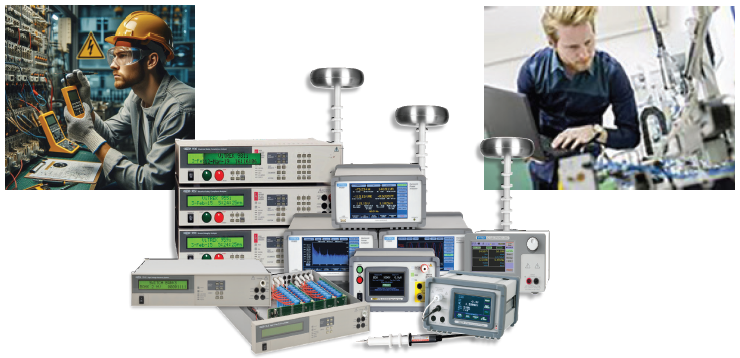
Image Credit: Vitrek, LLC
Proper calibration of this test equipment is crucial to meeting the strict performance requirements of many high-voltage systems. Calibration results often need to comply with national or international standards, and are typically carried out by certified laboratories with traceability to recognized benchmarks, such as those maintained by the National Institute of Standards and Technology (NIST).
This article explores why calibration of high-voltage test equipment matters and highlights the key factors involved in maintaining measurement accuracy.
High-Voltage Measurement Techniques
Each high-voltage measurement technique offers distinct advantages and requires its own specific calibration method.
- Step-Down Transformers: Reduce excessive voltage to reasonable levels for measurements
- Capacitive and Resistive Voltage Dividers: Divide voltage proportionally
- Series Resistance (Microampere Measurement): Measures current through a high resistance connected to the voltage source.
- Analog Style Measurement Devices:
- Sphere Gaps measure voltage by watching the breakdown voltage between two spheres
- Electrostatic measurement quantifies the electrostatic force between two plates
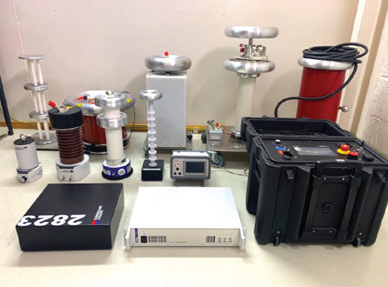
Figure 1. Many types of equipment are used for high-voltage measurement. Image Credit: Vitrek, LLC
Why Measure High Voltage?
Measuring high voltage becomes increasingly critical as technology continues to improve. High-voltage systems help reduce current-carrying requirements and minimize energy loss, making them more efficient overall.
In many applications, voltage levels directly influence system performance, so the voltage sources must be both accurate and reliable to meet design specifications. In addition, ongoing monitoring is essential to ensure consistent, end-to-end system performance over time.
High-Voltage Applications by Industry
High voltage, defined here as 1 kV to 150 kV (AC or DC), is employed in several fields, including:
- Analytical Instruments: Mass spectrometers and photomultiplier tubes
- Defense and Aerospace: Radar systems, CRT displays, and flight simulators
- Homeland Security: Baggage screening and bomb detection equipment
- Non-destructive Testing and Inspection: Systems that ensure material and structural integrity.
- Manufacturing Processes: Such as electron beam welding and electrostatic coating applications
- Medical and Biotechnology Equipment: X-rays and radiographs
- Research Laboratories: Products like detectors, accelerators, and large-scale analyzers
- Semiconductor Equipment: Required for ion implantation and sputtering procedures
- High Voltage Power Supplies: Essential for industrial applications
- RF Generators and Matching Networks: Used in telecommunications and television
- Power Distribution: Crucial for detecting corona and testing cable insulation in electrical cables and harnesses, whether in utility networks, manufacturing plants, or campuses.
Accurate high-voltage measurement is also a must-have in these subsystems to ensure operating efficiency and safety. Devices that need high-voltage readings include:
- Hipot Testers: To ensure electrical insulation integrity
- X-Ray Power Supplies: To validate performance for medical and industrial imaging
- Ion Implantation Systems: Control electrical systems for accurate particle acceleration
- Energy Transmission Sub-Stations: High voltages in power grids improve efficiency and minimize losses
Safety Considerations
Calibrating high voltages is vital for safety reasons.
- Verifying proper soil ground conductivity helps eliminate hazardous ground loops.
- Maintaining sufficient clearance reduces the risk of accidental flashovers.
- Positioning physical barriers appropriately ensures safety around high-voltage areas under all operating conditions.
- Safely discharging stored energy in voltage systems is essential before performing any adjustments.
- Following manufacturer guidelines and recommended practices significantly reduces safety risks.
High-Voltage Test Equipment Calibration
Calibration Standards and Accreditation
ISO/IEC 17025:2017 specifies the general requirements that must be met for calibration and test laboratories to be considered technically competent enough to conduct calibrations. Additionally, standards such as ANSI/NCSL Z540-1-1994 are recognized in the industry for setting measurement uncertainty criteria.
Accredited labs must also undertake periodical exams to keep their certifications. These assessments ensure that their procedures, environment, and personnel meet the highest levels of competency.
Ensuring Measurement Uncertainty
When calibrating high-voltage test equipment, it is critical to account for all sources of measurement uncertainty, which include:
- Equipment Accuracy and Precision: Measuring instruments have a specified accuracy, typically stated as a percentage of the reading or a set number. Precision, on the other hand, refers to an instrument's capacity to deliver consistent readings over multiple measurements. Regular calibration guarantees that the instrument's accuracy and precision remain within the prescribed tolerances.
- Signal Type and Frequency: High voltage readings can be impacted by signal type (AC or DC) and frequency. AC signals, particularly those at high frequencies, can cause additional inaccuracies due to reactive components in the measurement system. It is critical that the measurement takes into consideration this responsiveness so that accuracy is maintained.
- Calibration Procedures: Compare the instrument's measurements to a recognized standard and make appropriate modifications. To reduce extraneous impacts, this process must take place in controlled surroundings. Calibration periods vary according to the instrument's use and the importance of its measurements. Manufacturers usually prescribe optimal intervals.
- Environmental Effects: Environmental factors, including temperature, humidity, and altitude, can dramatically affect measurement accuracy. Temperature variations, for example, might cause material expansion or contraction, changing component physical dimensions and, as a result, measurement. Humidity can affect the conductivity and dielectric properties of insulating materials, whilst altitude variations can modify air density, influencing high-voltage discharge characteristics.
- Cabling and Connections: High-quality cables and secure connections are essential for accurate high-voltage measurements. Poor connections add resistance, causing voltage drops and inaccurate readings. Cables must match the required voltage rating and have proper insulation to prevent leakage currents and maintain safety.
- External Influences: Uncontrolled factors, such as EMI and corona discharges, can cause large inaccuracies in high-voltage measurements. EMI can be reduced by employing insulated wires and ensuring adequate grounding. Corona discharge, induced by ionization of the air around conductors, should be minimized by utilizing smooth, rounded connections and eliminating sharp points that can concentrate the electric field.
Corona and Connections
Corona discharge is a typical cause of errors in high-voltage measurements. It happens when an electrical discharge ionizes the surrounding air, usually at sharp points or at air gaps in insulation. To minimize corona:
- Smooth out connection points to reduce the risk of discharge
- Use larger diameter wires to reduce the electric field strength around conductors
- Maintain ample separation between high-voltage components
- Use continuous insulation without gaps to prevent internal discharges
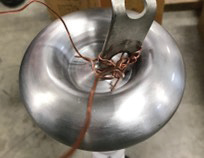
Figure 2. What Not To Do — Loose Wire Ends, Different Wire Thicknesses, Sharp Wire Bend. Image Credit: Vitrek, LLC
Fields and Interference
High voltages produce strong electric fields that can be affected by nearby objects, including the operator. External interference from sources such as radio stations or military installations can also distort measurements. To reduce these effects:
- Keep measurement setups away from probable sources
- Use correct shielding procedures
- Avoid moving objects or humans in the measurement area while testing
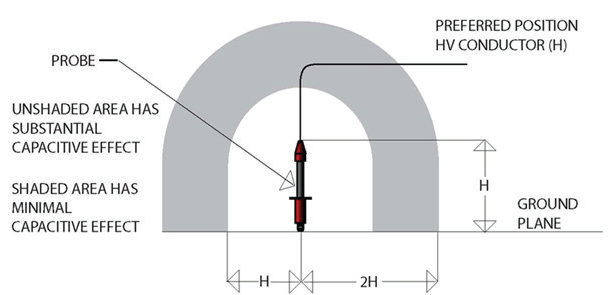
Figure 4. Diagram Showing Influence of External Fields on High Voltage Probe. Image Credit: Vitrek, LLC
Total System Uncertainty
Total system uncertainty refers to all possible causes of inaccuracy in a measurement setting. This includes:
- Device and Divider Errors: Each measurement system component has its own level of error.
- Operator Bias and Location Effects: The operator's experience and measurement environment can influence outcomes.
- Software Influence: Assess the accuracy and reliability of your data collection and analysis software.
High-Voltage Test Equipment Needs to Fit the Application
Devices commonly used in standards and calibration labs worldwide are capable of simultaneously measuring AC/DC voltage, frequency, peak-to-peak, and crest factor.
For example, the Vitrek 4700 can directly measure up to 10 kV, and up to 150 kV when used with its proprietary Smart Probes. It also features a chart mode for graphical documentation of high-voltage behavior, including drift, ramp time, overshoot, and sag—critical factors that can signal potential failure.
Accuracy calculations for equipment such as the Vitrek 4700 remain valid for one year after calibration. The accuracy specifications include measurement errors in the standards and techniques used by the manufacturer to calibrate the tester and probes.
The measurement accuracy specification includes base accuracy, floor, resolution, and high-voltage self-heating parameters. Direct measurements do not require any additional accuracy computations at the terminal.

Performance and Automation
The best available test equipment employs Digital Signal Processing (DSP) technology, which can give superior AC and DC voltage accuracy, stability, and resolution.
Signal averaging, for example, is a simple DSP technique that can increase measurement precision and stability. Ideally, the device should support test automation by including Ethernet and high-speed serial connection ports, allowing it to be fully configurable for specific testing requirements.
Some equipment, such as the Vitrek 4700, includes a USB printer port for recording measurements and printing hardcopy high-voltage graphs. This meter and its SmartProbes come with an ISO17025 calibration certificate, which guarantees accuracy and traceability.
The Role of Accredited Laboratories
Accredited laboratories play an important role in preserving measurement accuracy. These laboratories offer traceability to national and international standards, providing consistent and reliable calibration.
For example, the American Association for Laboratory Accreditation (A2LA) has accredited Vitrek's calibration lab to ISO 17025:2017 and ANSI/NCSL Z540-1-1994 standards. This ensures that all measurements are traceable back to the International System of Units (SI) through national metrology institutes such as NIST and NRC.
Conclusion
Calibrating high-voltage test equipment is more than a technical requirement—it's essential for maintaining safety and system reliability. By following strict standards and carefully accounting for all measurement uncertainties, the performance of high-voltage systems can be maintained, ensuring accuracy and consistency.
Accredited laboratories provide the necessary expertise and traceability to support these high standards.
As technology continues to evolve, the need for precise high-voltage measurement will only continue to increase. It's critical for industries to prioritize proper calibration to maintain operational safety and performance. In the end, effective high-voltage measurement protects both equipment and people, supporting safer, more dependable systems across the board.
Acknowledgments
This article is produced from materials originally authored by Bryan Withers, Vice-President, Engineering - Vitrek, LLC.
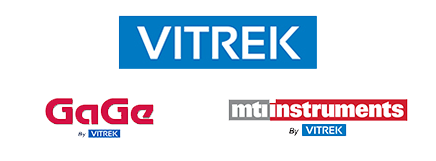
This information has been sourced, reviewed and adapted from materials provided by Vitrek, LLC.
For more information on this source, please visit Vitrek, LLC.